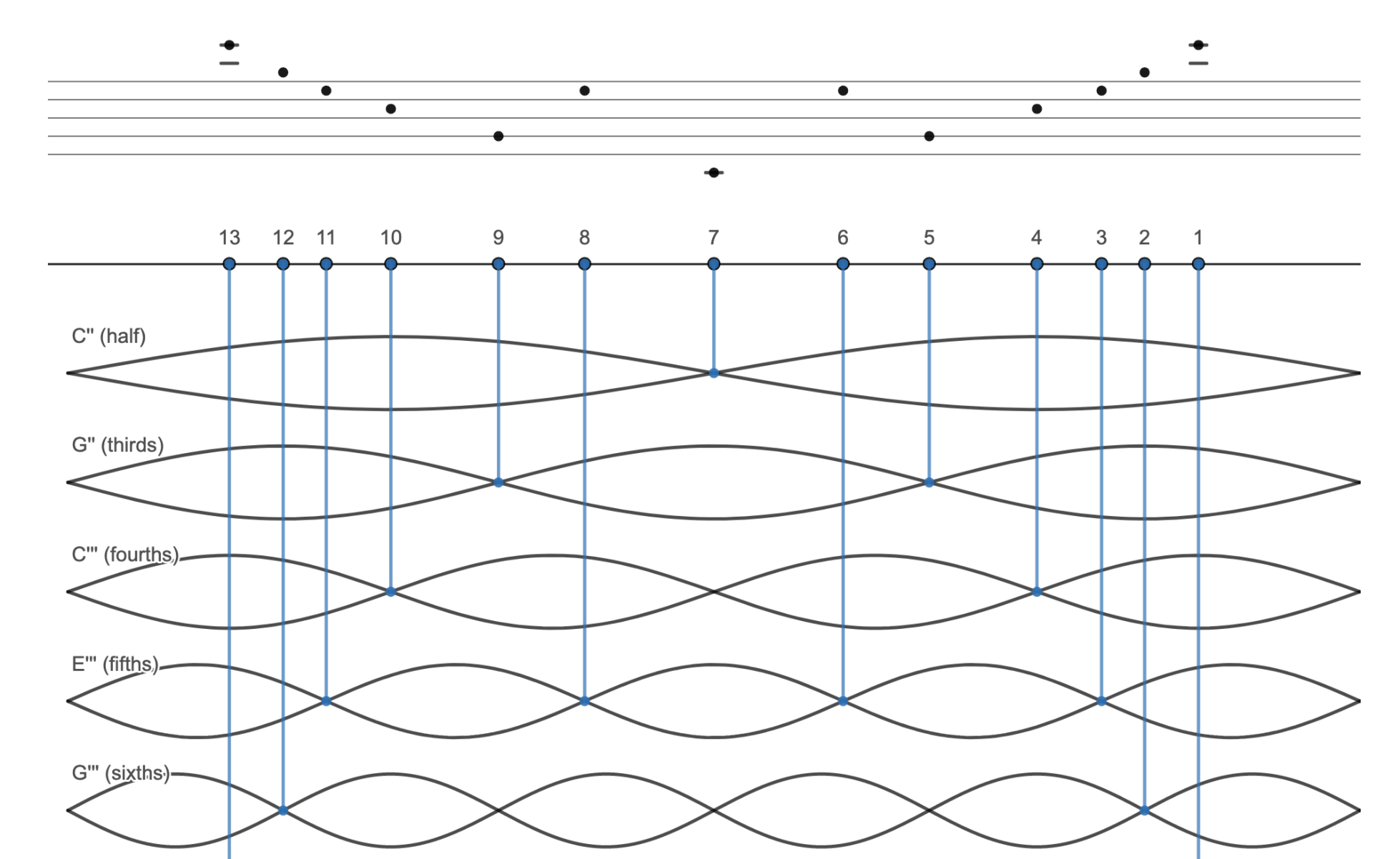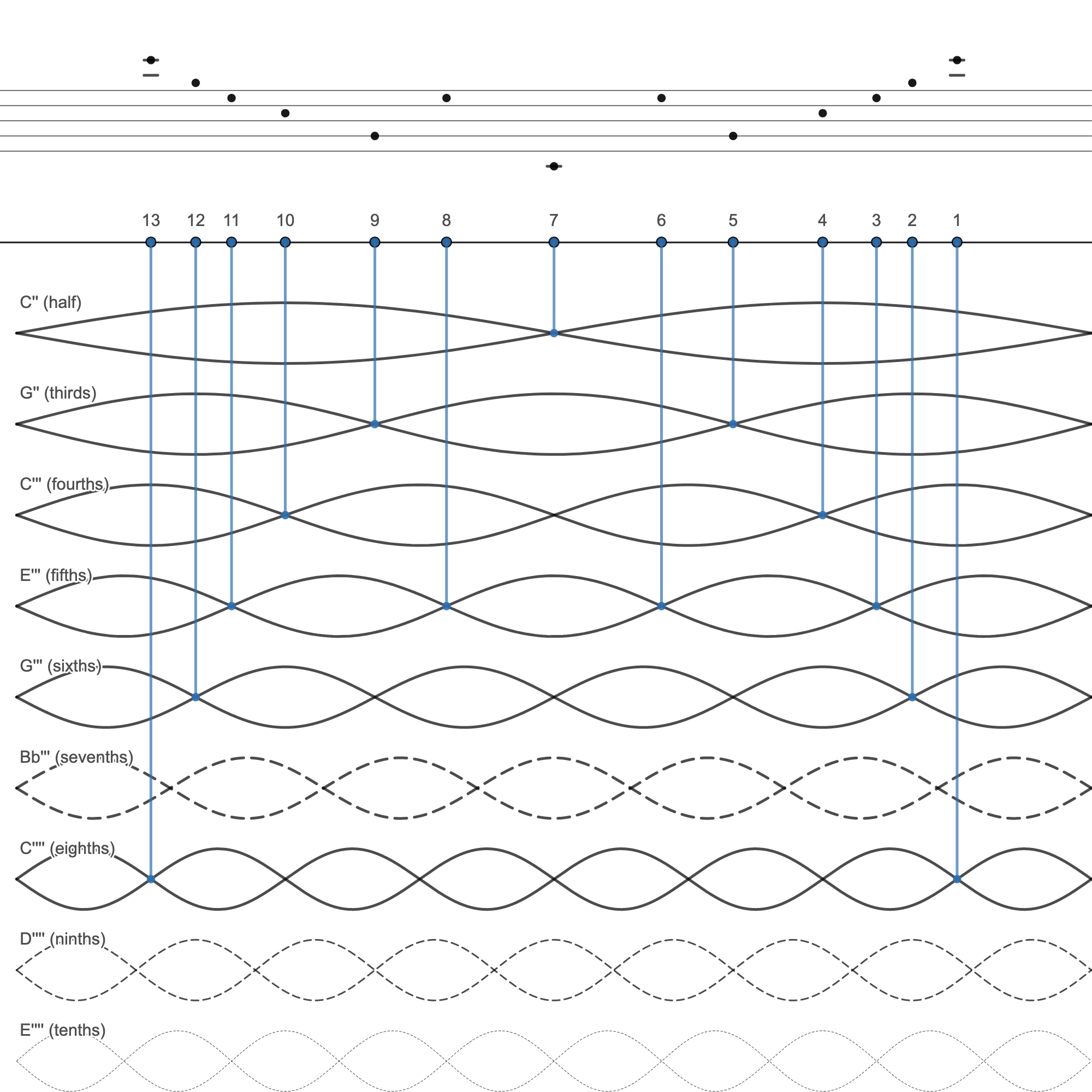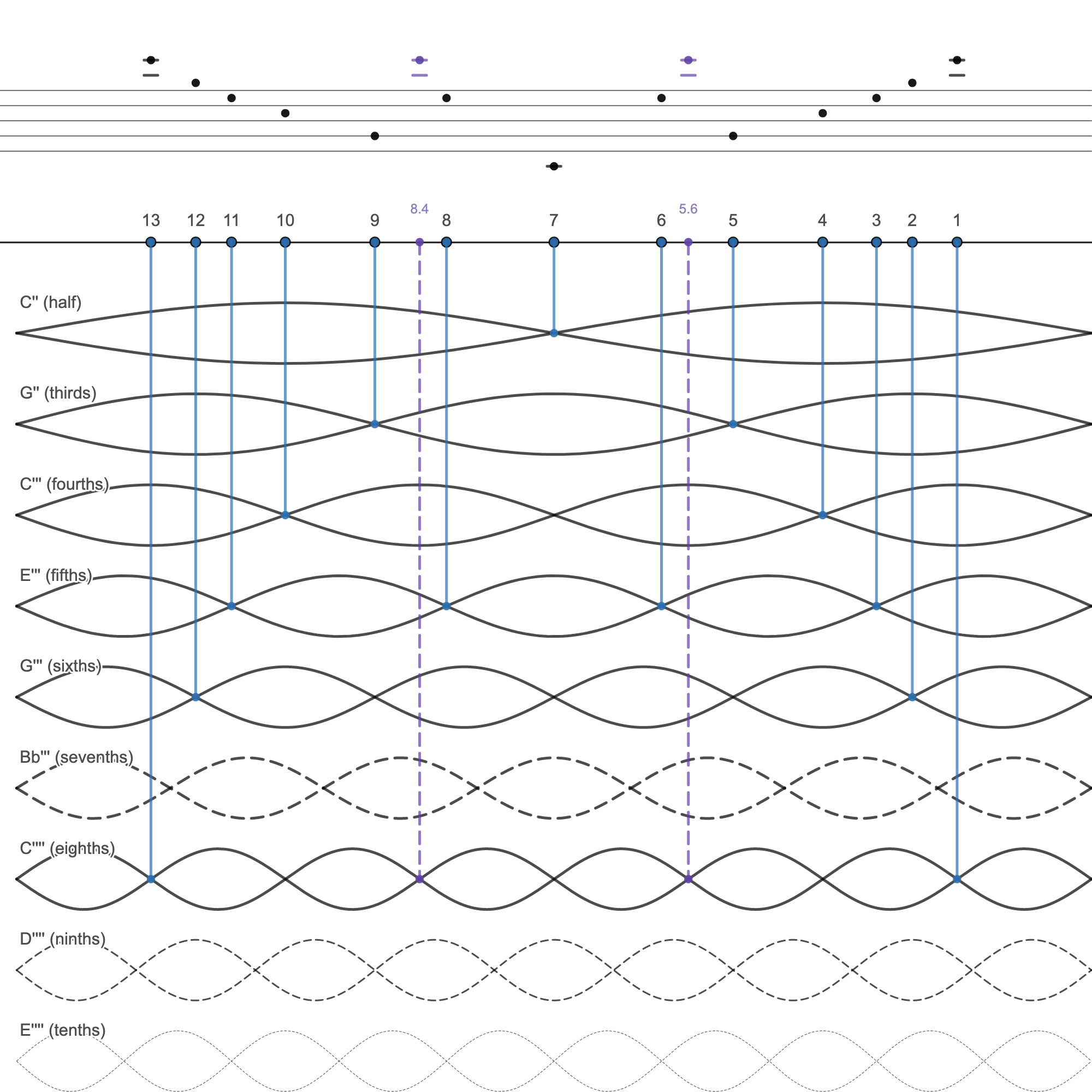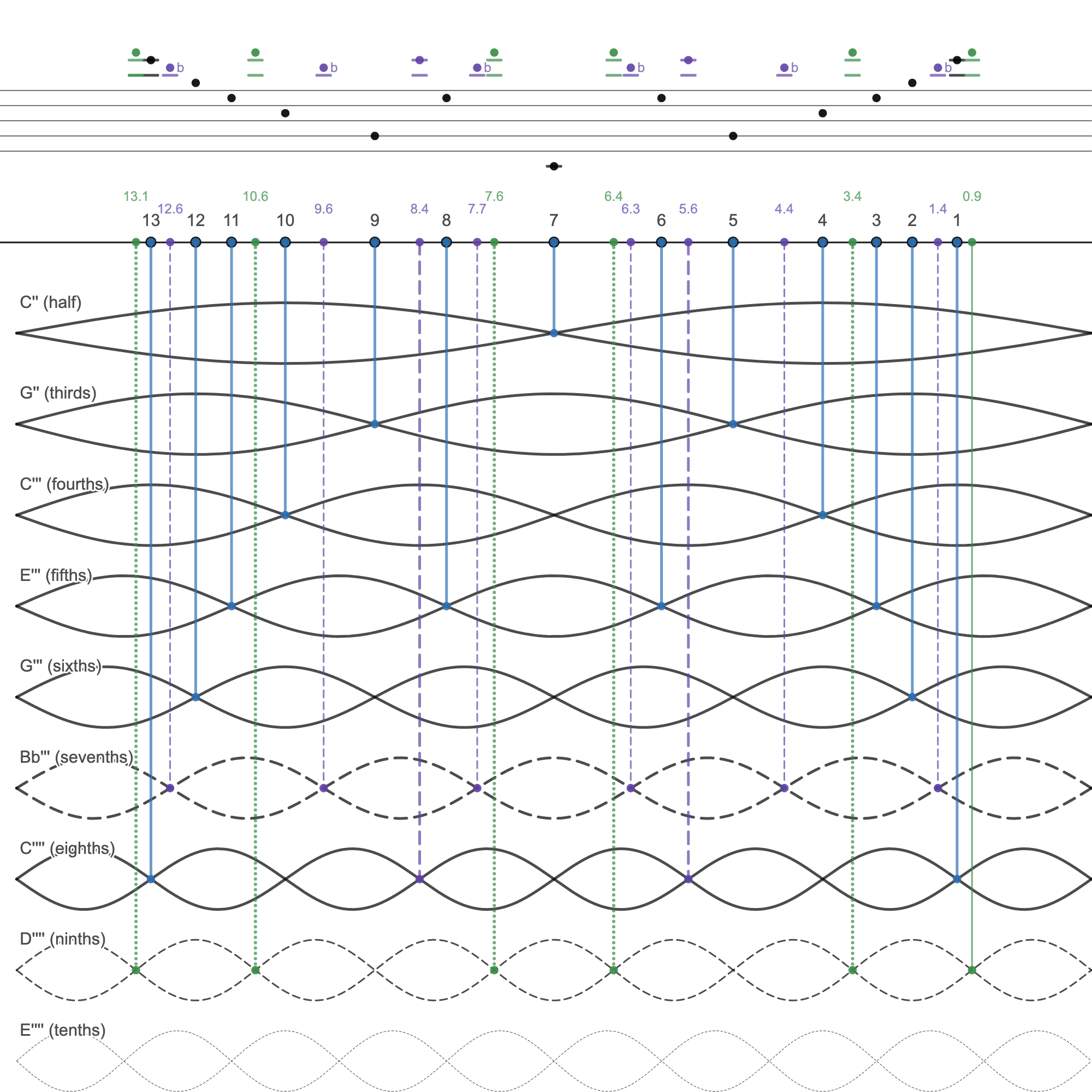Guqin Part 1: Harmonics and Hui Positions

At the top of the Guqin, there are 13 dots, or Huī 徽. The Huis are used in Guqin notation to tell the player where to place their finger(s). For example, Hui Position 8.5 means place your finger halfway between the 8th Hui and the 9th Hui. The first Hui is the right-most dot in the image below, and the 13th Hui is the left-most dot.

The placement seems a bit random at first. The Huis are not equidistant, and it's not like the Huis are spaced far apart and then get closer or vice versa. The only obvious pattern is that they are symmetrical.
So what determines how they are positioned?
The Huis are positioned according to harmonics. To play harmonics (Fàn Yīn 泛音, aka heavenly sound), we lightly touch the string at a specified position with the left finger and pluck the string with the right. Doing it right, we end up with a bell-like note. Heavenly indeed!
Growing up, I play the piano where all these tunings and intonations and harmonics are "hard coded." I press a button on the piano, and a specific tone rings out. Because the Guqin has basically infinite number of finger positions as an unfretted instrument, I did not have this hard coded cushion.
1: Harmonic Waves and the 13 Hui
As with many things music and sound, we start with waves. In the image below, we see a staff (with an invisible treble clef), and below there are waves divided into half, then thirds, then fourths, etc.

The top wave (2nd harmonic) has one node (the twist) in the very center. So if we lightly touch the very center of the Guqin, which corresponds to the 7th Hui, then we will get a C'. In all these examples, I'm going to use a string tuned to C as an example, for simplicity.
Going to the 3rd harmonic, if we place our finger where the twists are (1/3 an 2/3) point along the string, then we'll get a G' note.
Now, if we take all the "twists" in the solid color waves below (2nd, 3rd, 4th, 5th, 6th, and 8th harmonics), then we arrive at the 13 Guqin Hui. Again, the staff has an invisible treble clef.

2: Two Hidden Positions for the 8th Harmonic
Say, I just noticed not all twists on the eights waves have a hui.
That is true. I don't know why, but it could just be that the Huis would get a bit too crowded. The 13 Huis are also supposed to represent the 13 months in the lunar calendar, so adding 2 more is not symbolically sound. We can still play those notes, and we'd get the harmonics just fine. I added them in purple below to illustrate where we'd have to tap the string.

3: Lucky Number Seven
Back up now, why aren't there any Huis demarcating the 7th harmonic?
I don't know. Maybe because then there'd be too many pesky dots. Maybe because the note that rings is a Bb (it's actually somewhere between an A# and a Bb, leaning more to Bb) and that does not fit into the pentatonic scale. Or because the Bb (minor sevenths) is a sorrowful sound and the Guqin makers were a jolly bunch. Or the Guqin makers really wanted to only have 13 Hui to symbolize the 13 months in a year. 🤷🏻♀️ Again, we can play them.. just have to go digging in between the huis. Added them below in slightly lighter purple.

5: Beyond the 8th Harmonics
We can even continue onwards to play the harmonics generated from dividing the string in ninths and tenths.
Here's ninths added to the list.

And just for kicks, the tenths as well. Now, these higher pitched harmonics are tough to play, the sound gets quieter and less resonant the further up we go.

REFERENCE: Desmos page. Desmos is an online graphing calculator that produces beautiful charts and math formulas.
After I understood (better) the science behind the 13 Hui positions (and how to play other harmonics in between Hui positions), I started diving into how to play open and pressed notes. In other words, where do I press to get a note?
To be continued: Guqin Part 2: Open & Pressed Notes
Other parts in the Guqin series:
Intro | Part 1 | Part 2| Part 3 | Part 4 | Coda (TLDR & links)